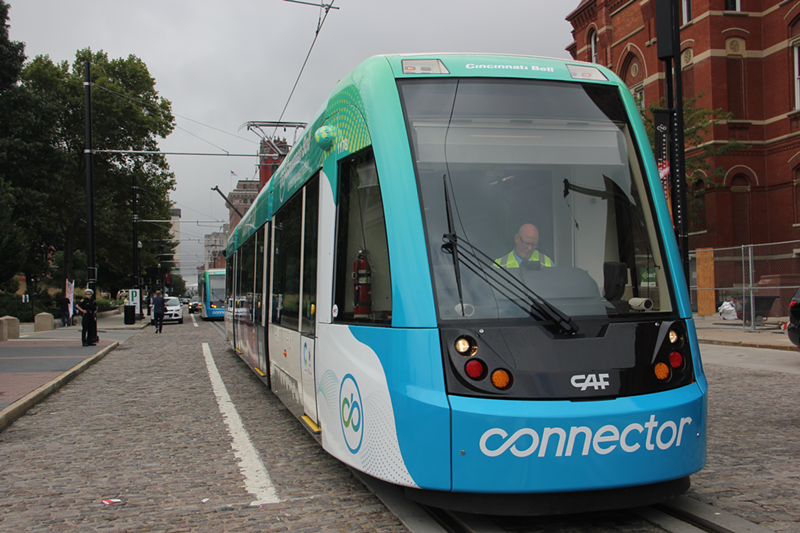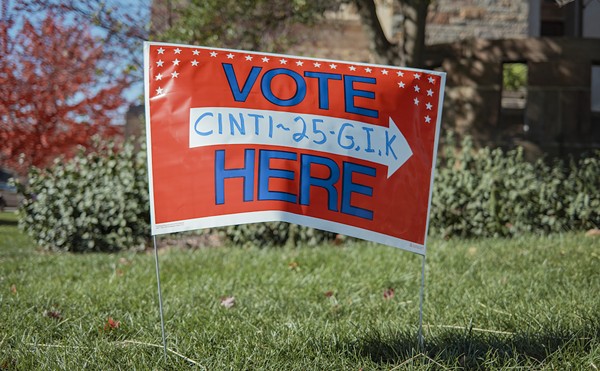Good morning all. I’m gonna get to the news here in just a minute, but bear with me. I’m still recovering from the laughter and crying at the Comet last night, which hosted a fundraiser for Kathy Y. Wilson.
You should know her from her columns in CityBeat or her articles in Cincinnati Magazine or her writer-in-residence stint at the Public Library of Cincinnati and Hamilton County or her journalism classes at University of Cincinnati or her book or any of the other things she’s done to make her a rightful cultural icon here in the city. Long before this line of work was in my head as a thing I could do, I read Kathy’s column and marveled. Like her, I grew up in Hamilton, a place most treat as a backwater. I’m still struggling to live up to her example when it comes to truth telling — we all are — but her wit and bravery inspired me to give it a shot. Right (usually) or wrong (very occasionally), Kathy is fearless.
Anyway, last night she held court — splitting sides and busting heads for a packed crowd that came to pay tribute and pass the plate as she battles, with her characteristic defiance and strength, some profound health challenges. Now I’m passing the plate on to you: if you’ve enjoyed her work, consider donating to her gofundme page.
• On to news. So, turn this one over in your head — an ad by a nonprofit that, by IRS rules, is not supposed to support specific candidates is targeting mayoral candidate Yvette Simpson. That nonprofit is run by a person who less than two months ago ran the reelection campaign for Simpson’s opponent, Mayor John Cranley.
Former Cranley campaign manager Jay Kincaid founded the nonprofit A Stronger Cincinnati Aug. 1. New campaign manager Chandra Yungbluth replaced Kincaid in that role less than a month prior to Kincaid’s founding of the nonprofit. As a 501 (c) 4, A Stronger Cincinnati is prohibited from backing or coordinating with specific candidates but can raise unlimited amounts of money and does not need to divulge its funders. That’s raised eyebrows among Cranley critics. Kincaid also worked on Cranley’s 2013 campaign and was the mayor’s chief of staff until last year.
A local repository of thinly veiled pro-Cranley opinion pieces says the ad “isn’t affiliated with the Cranley campaign." I'll let you you do your own math on this one.
The ad, which is running on Facebook and other social media sites, slams Simpson for her vote against the $500 million expansion of Children’s Hospital in Avondale earlier this summer. That expansion will increase capacity for the hospital to treat sick kids, but will also require the demolition of a number of large houses and the relocation of several families. Avondale’s community council and other neighborhood groups strongly opposed the move following a history of expansion by Children’s, the Cincinnati Zoo and the recent MLK/I-71 interchange in the neighborhood.
• So, it’s been a year since the Cincinnati Bell Connector launched. How’s the streetcar doing? Not great at all, really, if you measure it by the yardstick of ridership projections touted during the campaign to bring the party train transit system here.
But that’s just part of the story, supporters say. Ridership revenues only account for about 17 percent of the streetcar’s revenues, and despite ridership that barely hits 1,000 people a day during the week, it’s still in the black. Weekends have been much better, with tourists and folks coming down for downtown events and trips to Findlay Market piling into the cars. Supporters also say that ridership figures miss the big economic development the streetcar has spurred, and that the system is tying together Over-the-Rhine and downtown. But even its most ardent supporters admit that the transit project faces big hurdles in terms of traffic management and operations bugs to get the cars riding on time and increase the number of passengers on them.
One of the most-overlooked and persistent, at least to my mind: the unreliability of the electronic kiosks at streetcar stops. In the past week, I’ve attempted to buy Metro bus passes at four of those stops. The credit card readers on three did not work. That’s anecdotal, for sure, but it’s not the first time I’ve had this problem and the numbers seem to back me up here: according to this detailed Business Courier article, the system logged more than 1,000 problems with the ticket kiosks through May. That may account for part of the reason the streetcar is more than 160,000 rides under projections as of the middle of August. Meanwhile, after $148 million in federal TIGER grants and local money sunk into the 3.6-mile loop, the city’s Metro bus system — which ferries residents to jobs and groceries and other necessities — is in crisis as it awaits the opportunity to put a sales tax increase on the ballot so it can become more functional.
• The county taxpayer-funded $212 million restoration of Union Terminal is chugging along on schedule, The Cincinnati Enquirer reports, and should be finished by October 2018. After all the money and time, what’ll be different? Well, the building won’t eventually crumble to dust, for one. Beyond that, don’t expect radical changes inside or outside. But there are a few new features that will accompany the necessary but less-obvious preservation work. Those include a new home for The Center for Holocaust and Humanity Education, which is moving into the building in January 2019. That’s especially appropriate, Cincinnati Museum Center President and CEO Elizabeth Pierce says; many of the survivors of the holocaust who made their way to Cincinnati first entered the city on trains pulling into Union Terminal.
• As a Cincinnati-area state lawmaker pushes for tighter restrictions on Ohio’s ability to execute mentally ill or disabled death row inmates, a new study suggests that most of the 26 people currently slated for state execution have suffered from psychological issues, intellectual impairments or a history of profound abuse. You can read our story on what that means as the state resumes executions and as State Rep. Bill Seitz is sponsoring a bill that could give some inmates a chance to appeal their death sentences.
• While Ohio’s economy may be sagging, Greater Cincinnati is outperforming the rest of the state, economic experts say. An official with the Federal Reserve Bank of Cleveland is bullish about the region’s growth and prosperity. That’s encouraging, but also sobering, considering Cincinnati has one of the highest childhood poverty levels in the country and that forty-six percent of its black residents live below the poverty line, suggesting that the prosperity isn’t reaching nearly enough people.
• One thing that would put a dent in that rosy outlook — consumer goods giant Procter & Gamble moving some of its businesses out of the area. Could that really happen? P&G CEO David Taylor suggests it could if activist investor Nelson Peltz grabs the seat on P&G’s board he’s been campaigning for. Peltz believes the company isn’t profitable enough and wants to shake things up — something current corporate leadership is set against. Among those shakeups, Taylor suggests, could be moving some or all of the four major P&G divisions in the region elsewhere. Those businesses employ about 10,000 people here — more than 10 percent of the company’s global workforce. Taylor says he has no intention of moving those enterprises, but that Peltz favors it. Peltz wants radical changes — including cutting to the bone corporate research and development — but hasn’t made concrete statements about relocating parts of P&G outside the region.
• Meanwhile, national economic growth slowed slightly in August, under performing economists’ expectations. America’s economy added about 156,000 jobs — fewer than in past months and less than the 180,000 economists suggested. Unemployment ticked up to 4.4 percent from 4.3 percent in July. Wages grew by just 2.5 percent, according to a report by the Bureau of Labor Statistics released today.






